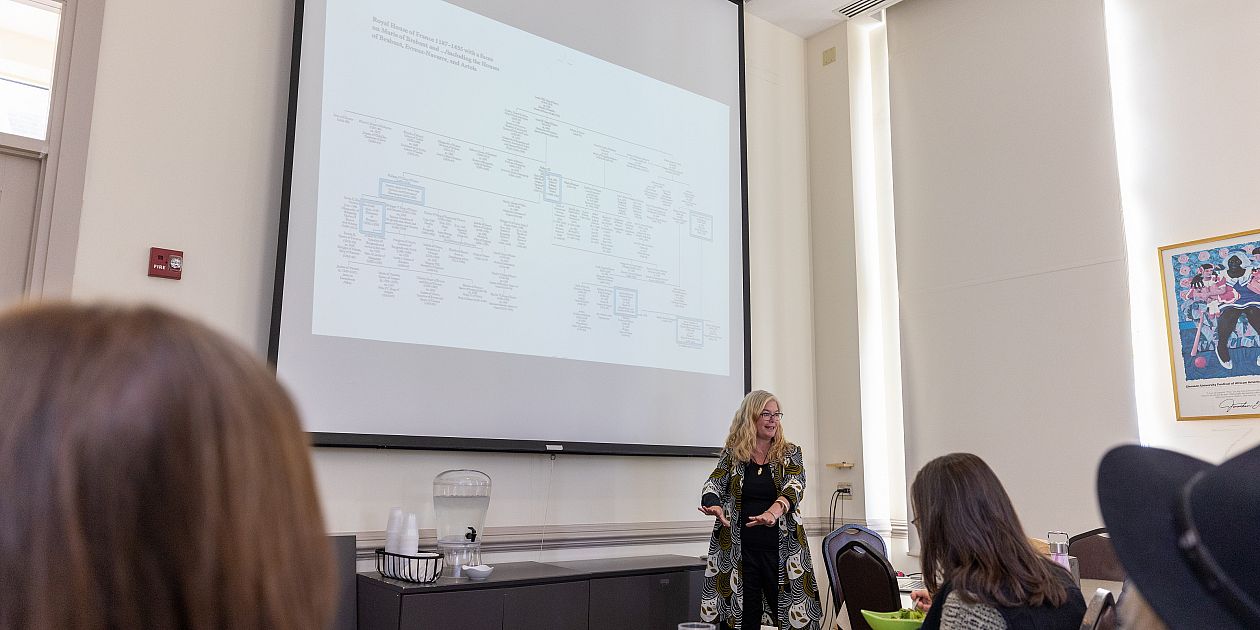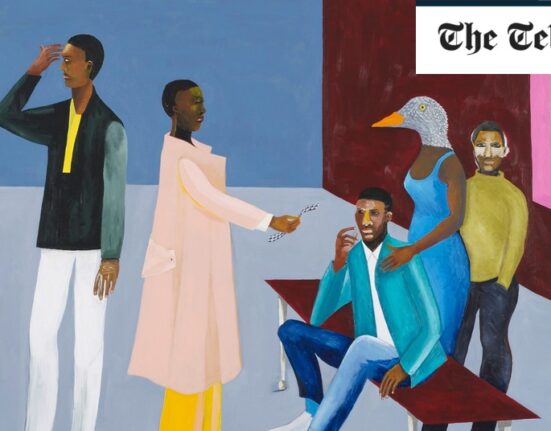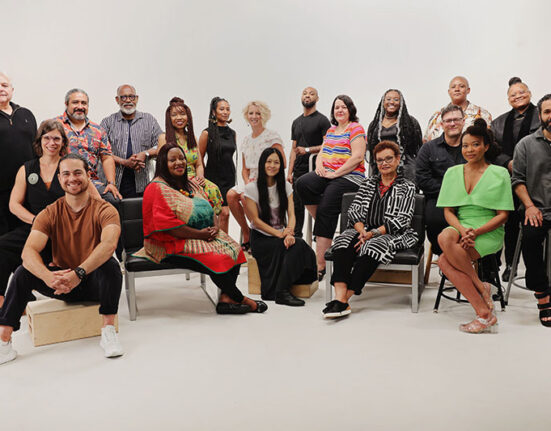Historians traditionally look at written text, things that use words to record ideas, said Professor Tracy Chapman Hamilton in her Sweet Talks presentation, “Redrawing Boundaries: Documenting, Visualizing and Mapping Medieval Gender,” presented on October 16. Hamilton, Associate Professor of Art History, said that as an art historian with a focus on medieval art history, she is using art to establish the context of history.
Images and objects, she explained, are visual texts. They act the same way as written texts and still need to be parsed and verified, but that in using objects in a historical context, researchers are able to collect information about who made the objects (crafts people), or who had them made (patrons), and those who looked at them (consumers/audiences). In her research, Hamilton is looking at the connections between objects and the women who owned them, gave them as gifts, collected them, had them produced, and how they traveled—both the women and the objects. In many ways, Hamilton explained, these women escaped nationhood and boundaries, because elite women in particular were born in one place and married into a family that lived somewhere else. So, they had two sides to their lives, their original families and their new families, and they also continued to exchange ideas and objects with their families, including sisters who were also married and living in new areas.
Hamilton’s research looks at how women were mostly invisible throughout historical scholarship. With her interest in medieval history, she explained how her original focus was on all the women she could find in texts, which were only a few, but she soon realized that there was a wealth of unwritten information available about them as well. This she found in their objects; things such as rings, which were at one point thought of as decorative art as opposed to fine art like painting, sculpture, and architecture. Most of this “decorative art” was owned or produced by women and since historians did not deem women’s work important, they did not incorporate it into the canon for a long time. It’s only just beginning to change because of the work she and her colleagues are doing.
Hamilton’s research resulted in an entire book devoted to Marie of Brabant (1260-1321). “When you start looking at the archives and the objects, there are whole other books about these women to be written,” she said.
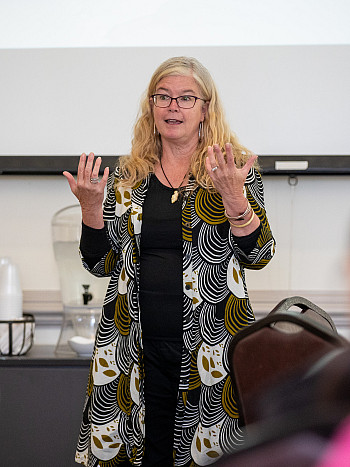
“When you start looking at the archives and the objects, there are whole other books about these women to be written,” said Tracy Chapman Hamilton, Associate Professor of Art History.
More recently, Hamilton’s focus turned to the other women of that time who all have connections to France and are all in Paris at the end of the 13th century into the early 1300s. These women were widows and gained access to money after their husbands died. The women can use the money however they want, and they go crazy.
“It’s wild,” said Hamilton. “They are all hanging out with the same artists. They move houses so they can live near each other in Paris. They travel around together. When one dies, they swoop in and collect everything that woman had, so no one else gets it, or that person leaves it to them in their will or testament.”
When Hamilton first started researching objects owned by medieval women, there was nothing published. She started looking at primary sources, going back to documents like inventories, histories, chronicles, and wills. Hamilton started making connections. There she saw the comparison of collecting and gift-giving and what became visible were the relationships that these women valued most. It was, she said, a new idea that women were conscious of geography. In looking at Marie of Brabant, Hamilton discovered she founded a series of chapels between France and Brabant along the road between where she was living and where she was born. She was drawing a line to show how she joined these two places.
In 2019, Hamilton co-edited the book Moving Women Moving Objects (400-1500) with Mariah Proctor-Tiffany, Professor of Art History at California State University Long Beach. Together, Hamilton and Proctor-Tiffany created the website mappingthemedievalwoman.com (partially funded by Sweet Briar College Interdisciplinary Faculty Grants) in the hope that this will become a digital resource for scholars worldwide to contribute data about medieval women artists and patrons.
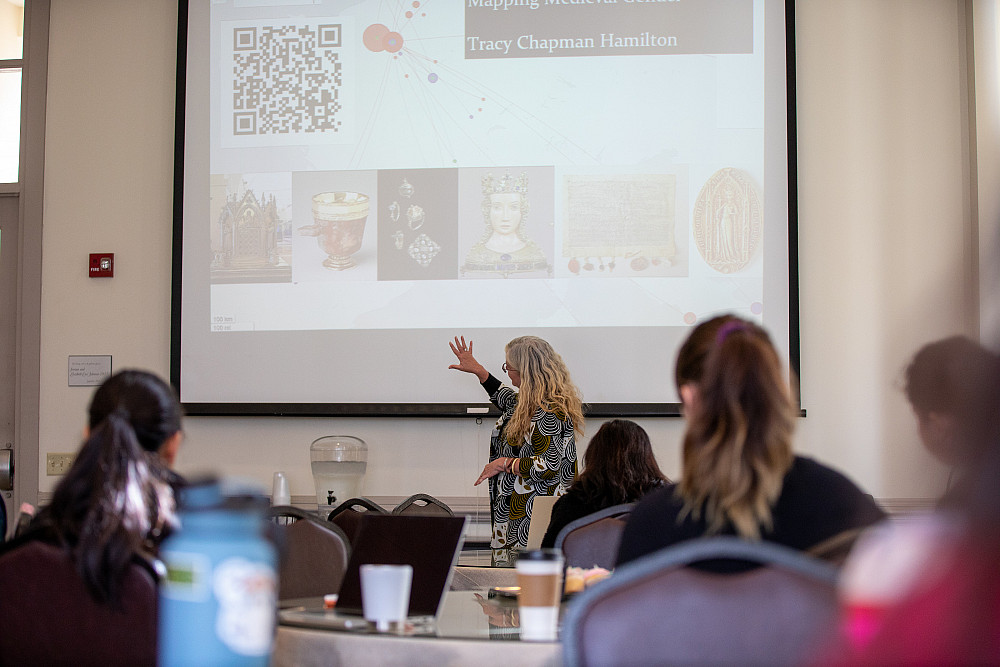
Tracy Chapman Hamilton, Associate Professor of Art History, presents her research on medieval women.
###
Sweet Talks are monthly presentations by faculty and students open to the entire campus community. The next Sweet Talks event is Wednesday, October 29, when David Ebner, Assistant Professor of Political Science, presents “All Games Have the Same Rules.” This presentation will take place in the Reahard Learning Gallery of the library.

